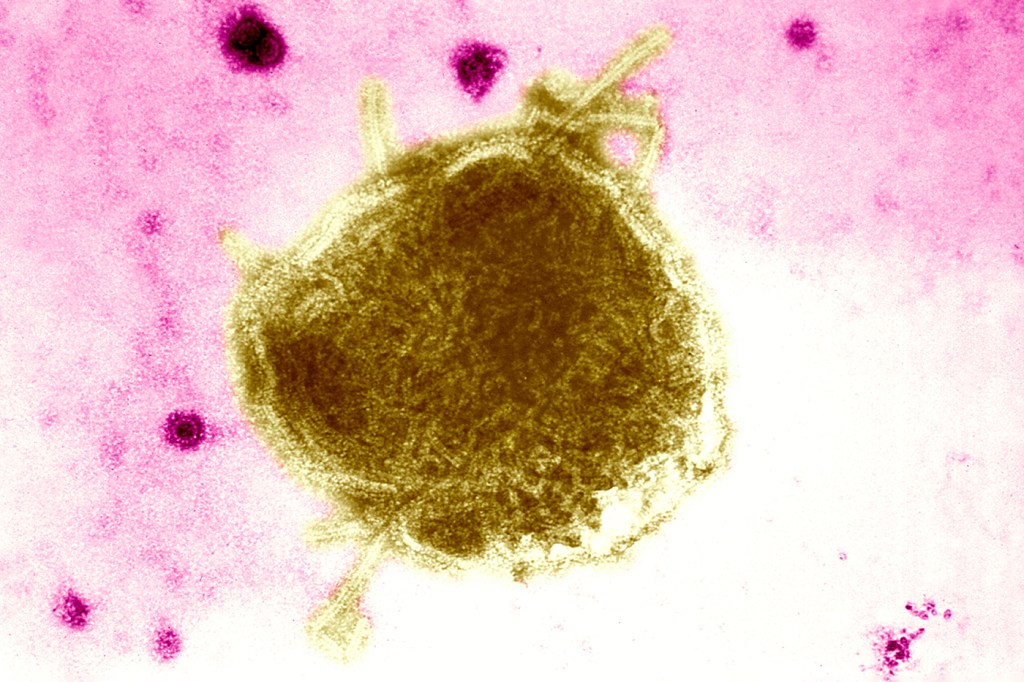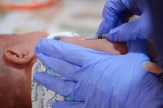How bad is the Texas measles outbreak?
“It is really important that we take this seriously,” says Neil Maniar, director of Northeastern University’s Master of Public Health program and professor of practice in public health.

A measles outbreak in a rural Texas county is raising alarm among those in the public health community who warn that the largely conquered disease could be making a resurgence.
“It is really important that we take this seriously,” says Neil Maniar, director of Northeastern University’s Master of Public Health program and professor of practice in public health.
There are at least 58 confirmed cases of measles and 13 hospitalizations in rural West Texas, as of Tuesday, with another eight cases in neighboring New Mexico.
Northeastern Global News spoke with Maniar about the likelihood that the measles outbreak will spread to other states and communities. His comments have been edited for brevity and clarity.

What do you make of the situation as it stands?
I’ll start by saying this is concerning without a doubt. Measles is highly contagious, to put it mildly. For every person infected, they can infect up to nine out of 10 unvaccinated individuals that they come into contact with. So, it’s highly contagious — and contagious through airborne and contact mechanisms.
The CDC notes that a community vaccination rate of about 95% can help protect against outbreaks. What do you think happened in this rural part of Texas?
About 20% of children in Gaines County are not vaccinated, so we’re talking about a very susceptible population. Once you have an outbreak, it becomes much more difficult to control that outbreak. The key to preventing outbreaks is vaccination — but importantly, being fully vaccinated. That means you’ve gotten both doses. If you have one dose, you have a good amount of protection; but the maximum is with both doses.
Texas is not alone. There are many areas of the country that fall below that 95% threshold that we want for measles vaccination. And that means that we could well see similar outbreaks in other parts of the country.
How bad could things theoretically get? Are we talking about another pandemic?
I’m not worried that we’re going to have a pandemic because we have many individuals who are fully vaccinated — and the vaccination is very effective against measles. The bigger concern is the potential for transmission in pockets of the population where there are lower vaccination rates. This isn’t the first time it’s happened: a couple years ago we saw one in New York, and we’ve seen them elsewhere.
What kind of impact could the disease have if it spread to a densely populated urban area?
Editor’s Picks
If we have pockets in urban areas with a large percentage of unvaccinated individuals, I can see there being more significant outbreaks. The other concern there is that the risk of hospitalization is fairly serious with measles, so we do worry a bit about the impact on the health care system if there are larger outbreaks. That’s certainly something we want to prevent. We want to make sure that we can improve vaccination rates in highly populated areas as quickly as possible so that we can prevent the likelihood of an outbreak like this.
Of course, it’s hard not to talk about this issue without talking about the broader concerns about what federal policy might look like around vaccinations and the potential dismantling of Health and Human Services infrastructure, including health education programs, and the layoffs we’re seeing at the CDC and HHS that could have a ripple effect in communities across the country. The concern is, will we even have the infrastructure to deliver vaccinations at scale to ensure that all communities are effectively vaccinated? It’s certainly something that will likely contribute to future outbreaks.
What do people need to know about the vaccine?
The measles, mumps and rubella (MMR) vaccine is part of the childhood vaccination schedule. We have an incredibly effective, long-lasting vaccine that has been shown to be safe. Really, it’s one of the public health success stories of the 20th century — and it’s really important that we continue to make sure that everyone gets vaccinated.
But in some areas of the country, it’s easier to get exemptions for vaccination, which is what we’re seeing in Texas. As a public health community, we want to continue to make sure we’re promoting the vaccination schedule and ensuring access to these vaccines.
If someone does want to get the vaccination, they can go to their pediatrician or health care provider and get vaccinated.
It is really important that we take this seriously. There’s the risk for hospitalization, but there’s also the long-term health effects of getting measles. So this is something we don’t want to mess around with.












